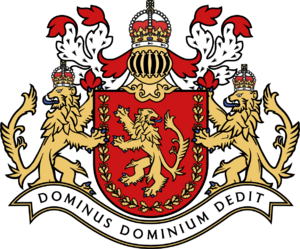Home Service (Great Nortend): Difference between revisions
| Line 16: | Line 16: | ||
==Personnel== | ==Personnel== | ||
Home Service units have a wide mix of ages and generations, from young men fresh out of muster service to retired ex-soldiers. After compulsory muster and service, there is the option of continuing in the Home Service. This is somewhat common amongst the middling classes and most home servicemen continue on to have civilian jobs along the lines of a yeoman farmer, shopkeeper, tradesman, teacher, clerk, salesman or manager. Those who do not join immediately after muster and service may join up later on, and many retired ex-soldiers also volunteer as home servicemen. In rural areas, manual labourers also often join up after muster and service, although they do not usually stay for very many years owing to the nature of their work. | |||
Women may also join the Auxiliary service as officers, similar to the regular Army. They primarily are drawn from the middling class nursing, clerical, teaching or secretarial professions, and may service in non-combatant roles. | Women may also join the Auxiliary service as officers, similar to the regular Army. They primarily are drawn from the middling class nursing, clerical, teaching or secretarial professions, and may service in non-combatant roles. | ||
Revision as of 11:15, 15 October 2019
| His Majesty's Voluntary Home Service | |
|---|---|
 | |
| Active | 8 June 1936 — |
| Country | |
| Role | Civil and military defence |
His Majesty's Voluntary Home Service, commonly known as the Home Service, is the voluntary land reserve force of Great Nortend, comprised of the Militia, Yeomanry and Auxiliary for the infantry, cavalry and service respectively. It is tasked mainly with the defence of the Erbonian Isles from enemy attack, insurrection, natural disasters and civil emergencies.
Home servicemen are obliged as a minimum to attend at least twenty-four drill nights and up to a fortnight of field exercises annually, although most units have weekly drill nights.
History
The Home Service first came under a unified command when the Defence of the Realm Act 34 Edm. IX was assented to. The Act combined the former locally raised militias, yeomanries and volunteer corps into the Home Service, which was placed under the command of the War Office. Later acts integrated the Home Service with the regular Royal Army by including Home Service battalions in the battalions of their sponsoring regiments.
Personnel
Home Service units have a wide mix of ages and generations, from young men fresh out of muster service to retired ex-soldiers. After compulsory muster and service, there is the option of continuing in the Home Service. This is somewhat common amongst the middling classes and most home servicemen continue on to have civilian jobs along the lines of a yeoman farmer, shopkeeper, tradesman, teacher, clerk, salesman or manager. Those who do not join immediately after muster and service may join up later on, and many retired ex-soldiers also volunteer as home servicemen. In rural areas, manual labourers also often join up after muster and service, although they do not usually stay for very many years owing to the nature of their work.
Women may also join the Auxiliary service as officers, similar to the regular Army. They primarily are drawn from the middling class nursing, clerical, teaching or secretarial professions, and may service in non-combatant roles.
Home servicemen normally wear duty dress or field dress. Uniforms have shoulder patches with the words, “Home Service”. Field dress uniforms additionally have platoon, company and battalion patches whilst duty dress uniforms have arm-bands with the same information.
Home servicemen are paid according to rank and branch, starting at £1/11/- per full day, and up to 10 shillings per drill night for a private.
Requirements
A home serviceman is required to fulfil the following criteria to be eligible to join the Home Service.
- Full Erbonian subjectship.
- Between 17 and 50.
- Of sound and sobre character.
- Physically able.
- Military disposition.
- Of the Church of Nortend.
There is no maximum age limit for service; however, a home serviceman will be forced to retire or leave if he fails to maintain sufficient physical ability to service in the Home Service. A home serviceman must also fulfil his obligations to the Home Service.
Organisation
The Home Service is mostly organised at a local level, being tasked with local defence. Though Home Service battalions are included in the numbering scheme of regular Royal Army regiments, they are not under the chain of command of the regimental hierarchy except for certain specialised matters. Rather, they answer to regional County Head-Quarters (CHQ) and thence to General Head-Quarters (GHQ), which also commands the regular forces.
This page is written in Erbonian English, which has its own spelling conventions (colour, travelled, centre, realise, instal, sobre, shew, artefact), and some terms that are used in it may be different or absent from other varieties of English. |
